When purchasing beef, “prime” and “choice” are often used to describe the meat’s quality. These grades are based on the meat’s marbling or the amount of intramuscular fat, which determines its tenderness, juiciness, and flavor. While both prime and choice grades offer high-quality beef, some differences exist.
In this article, we’ll dive deeper into the differences between prime vs choice, the grading process, and why it matters when selecting beef. Whether you’re a meat connoisseur or just looking to improve your next backyard barbecue, understanding the difference between prime and choice can make all the difference in creating a delicious and memorable meal.
What is USDA Prime Beef?
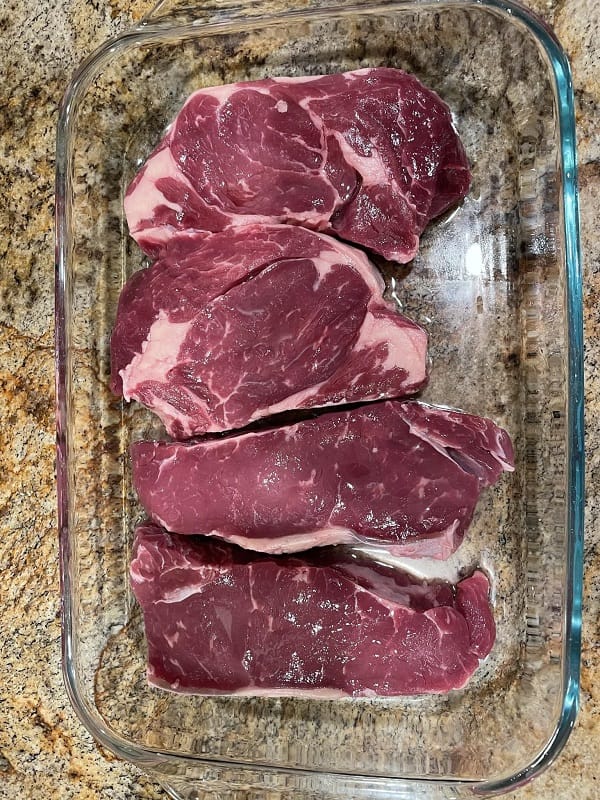
USDA Prime beef is the highest grade available in the United States. It is characterized by its marbling, which is the flecks of fat in the muscle of the beef. The marbling of USDA Prime beef is far superior to other grades of beef; it is more evenly dispersed, giving the beef a more tender, juicy texture and rich flavor.
USDA Prime beef is typically more expensive than other grades of beef, as it is generally produced from higher-quality cattle. It is also typically more difficult to find in grocery stores, as not all stores carry it. When you find it, you will know it is USDA Prime beef because it will be labeled as such.
USDA Prime beef is usually best suited for special occasions and cooking methods requiring high-heat cooking, such as grilling or broiling. USDA Prime beef’s marbling ensures that it retains its moisture, resulting in a juicy, tender steak.
When shopping for USDA Prime beef, look for a bright red color with a well-marbled texture. It should also have a firm texture and a bit of fat on the outside, a sign of freshness. The aroma should also be fragrant, with a slight sweetness.
What is USDA Choice Beef?
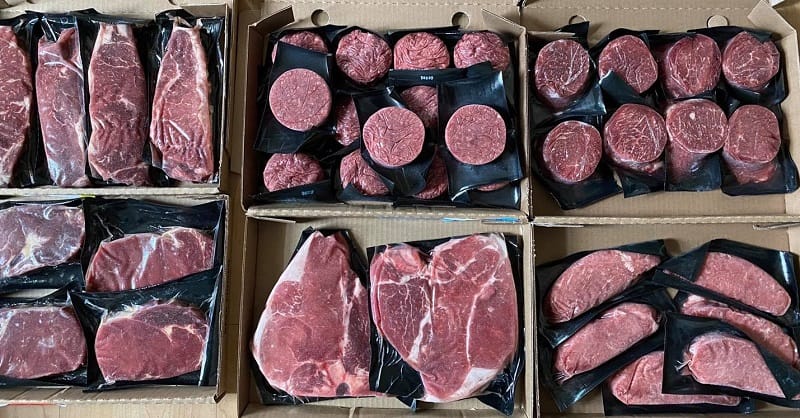
USDA Choice Beef is a grade of beef that the United States Department of Agriculture (USDA) recognizes as the highest quality. It is considered a premium grade of beef and is usually more expensive than other grades.
For a piece of beef to be classified as USDA Choice, it must meet certain criteria. It must be graded for tenderness, juiciness, and flavor. The beef must also meet certain fat requirements and have an acceptable amount of marbling (the amount of fat distributed throughout the muscle of the beef).
Choice Beef is typically more tender, juicy, and flavorful than other grades of beef. This makes it perfect for grilling, roasting, and pan-frying. It is also an excellent choice for slow-cooking recipes and can create delicious stews, roasts, and soups.
When shopping for USDA Choice Beef, look for the USDA grade shield on the package. This shield will tell you whether or not the beef meets the criteria for the grade. If the package does not have the shield, it may not be USDA Choice Beef.
Similarities Of Prime And Choice Beef
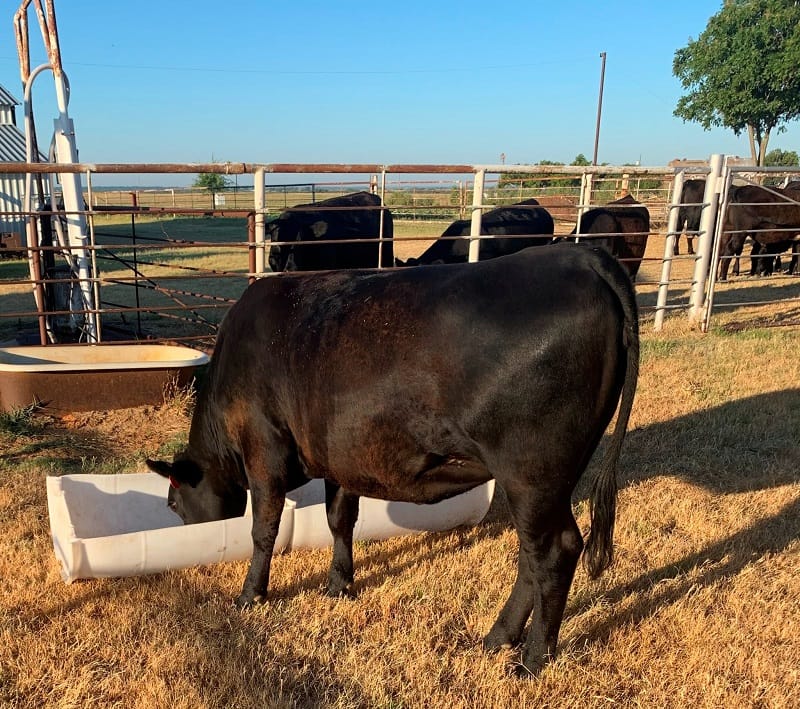
Prime and choice beef come from the cow’s same area, the rib section. The rib section is known for having the finest, most tender, and most flavorful cuts of beef. This makes sense, as the rib section is the most expensive part of the cow. Both prime and choice grades are highly marbled, meaning intramuscular fat is abundant. This fat helps to keep the beef juicy and tender.
Prime and choice beef also have the same amount of fat, but the fat in prime beef is more evenly distributed throughout the cut. The fat in choice beef is more concentrated in some sections, making it slightly less tender.
Another similarity between prime and choice beef is that both grades are aged for at least 14 days. During this time, the beef develops a richer flavor, and the enzymes in the beef break down the muscle fibers, making the beef more tender.
Finally, prime and choice beef are both graded by the USDA. This helps ensure that each cut of beef is of a certain quality and consistency – the USDA grades beef based on the amount of marbling, texture, and color of the beef. The top grade is Prime, and the second highest grade is Choice.
What Is The Difference Between Prime vs Choice
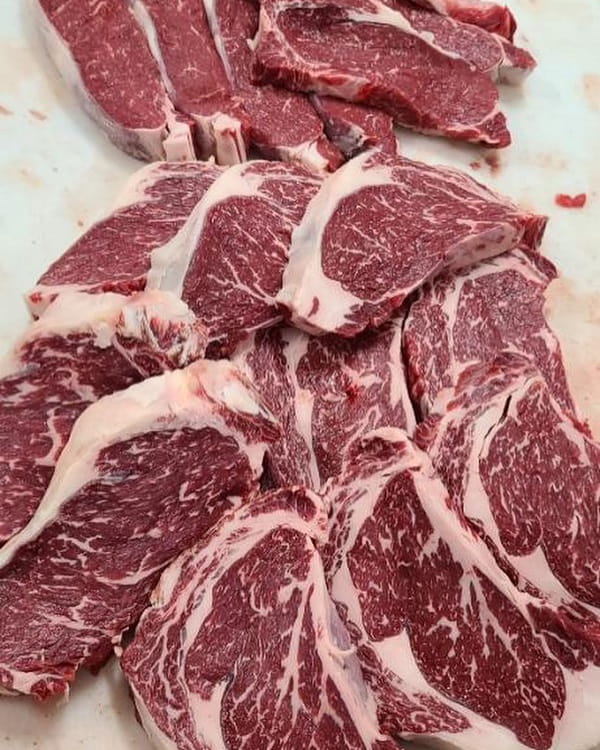
The main difference is the amount of marbling, which refers to fat distribution throughout the meat. Prime beef has more marbling compared to Choice cuts, making it richer and more flavorful. However, Choice beef is still considered exceptional in quality and has a slightly leaner profile.
Ultimately, it all comes down to personal preference. Some steak lovers prefer the boldness of Prime beef, while others appreciate the juiciness and tenderness of Choice cuts. Whether you opt for Prime or Choice, you can rest assured that you are getting high-quality meat that is sure to be delicious.
Appearance
Prime beef has more marbling, which refers to the fat throughout the muscle. This gives prime beef a more tender, juicier texture, and richer flavor. Choice beef may have less marbling but still has excellent taste and quality. The texture of choice beef may be slightly firmer, and the color may be slightly less intense.
Taste
In terms of taste, prime beef is often considered the top choice for its intense flavor. This meat is so well-marbled that it doesn’t require a lot of extra seasoning or flavors to be delicious. Choice beef is still very tasty, but it may have a milder flavor due to the lower level of marbling. However, both types of beef offer a great eating experience overall.
Flavors And Texture
When it comes to texture and flavor, prime beef has the edge over choice. The high level of marbling in prime meat leads to a softer and more buttery texture and a fuller, more complex flavor profile. Prime beef is ideal for those who enjoy a rich and indulgent eating experience. Choice beef, on the other hand, has a firmer, slightly chewier texture that some people may prefer. It also has a milder flavor that works well with strong seasonings and sauces. Whether you choose both prime and choice, beef provides high-quality meat that’s sure to satisfy.
Cooking Method
Prime beef is best when cooked using dry heat methods like roasting or grilling. This ensures that the beef retains its juicy flavor and tender texture. Choice beef is best cooked using moist heat methods like braising or stewing. These methods create a more tender cut of beef that is less likely to be dry and tough.
Choice vs Prime: Marbling
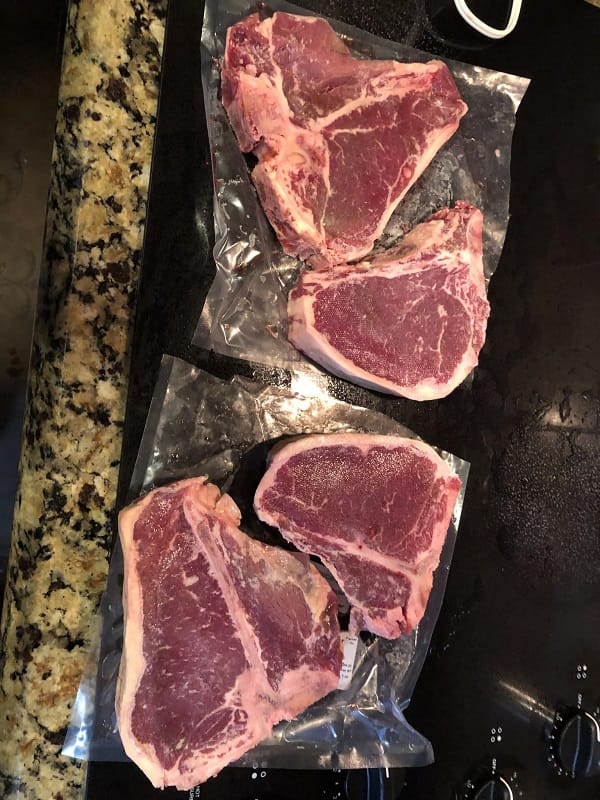
Marbling is the amount of fat that is found within the meat. Prime cuts of beef have a higher amount of marbling, which gives them a richer flavor and a more tender texture. Choice cuts of beef have a lesser amount of marbling and are usually leaner.
Grade
The USDA grades prime cuts of beef as the highest quality. These cuts typically have the highest amount of marbling and are the most tender. Choice cuts of beef are graded as lower quality than prime and may have a lower amount of marbling.
Price
Generally speaking, Prime beef will cost more than Choice beef because it is of higher quality. Prime beef is the top grade, meaning it is more tender and flavorful. This can come with a heftier price tag, but it is worth it for those looking for the best possible flavor and texture.
Which is Healthier: Prime vs Choice?
The answer: it depends. Prime beef is usually more marbled than Choice, meaning it has a higher fat content. This can make it less healthy than Choice beef, which tends to be leaner. On the other hand, the fat in Prime beef is often very healthy, meaning it is full of healthy omega-3 fatty acids and other beneficial fats. So, it depends on your individual dietary needs and preferences.
Prime vs Choice: Which Is Better?
Again, this depends on your tastes and budget. If you are looking for the highest quality and most tender beef, you should opt for Prime. It will cost more, but it will be worth it. However, if you are trying to watch your wallet and still get a good cut of beef, you should go with Choice. The flavor and texture won’t be as good, but it will still be delicious!
Read more:
The Three Best Grades Of Beef
We’ll look at the three top grades of beef – Prime, Choice, and Select – to help you determine which is the best for your next meal.
Prime
Prime-grade beef is the highest quality of beef available on the market. It’s the most tender, juicy, and flavorful of all the grades and is usually only available from top-tier butcher shops or high-end restaurants. Prime-grade beef is typically sourced from young cattle that have been grass-fed, making it a healthier option as well. Prime-grade beef typically comes with a higher price tag, but it’s well worth it for the quality and taste.
Choice
Choice-grade beef is just one step down from prime grade and is typically the most commonly available grade of beef in supermarkets and butchers. Choice-grade beef is still very tender and tasty and usually contains more fat than select-grade beef. Choice-grade beef is an excellent option if you’re looking for a good balance of quality and price.
Select
Select-grade beef is the lowest grade of beef available on the market. It’s usually sourced from older cattle and is much less tender and flavorful than the higher grades. Select-grade beef is usually the least expensive option, but it can still provide an excellent meal if cooked correctly.
How Does The USDA Grades Beef?
The USDA assigns grades to beef based on two factors: Quality Grading and Yield Grading. Quality grading evaluates the beef’s tenderness, juiciness, and flavor. Yield Grading evaluates the amount of usable lean meat on the carcass.
Quality Grading
The USDA assigns a grade to beef based on tenderness, juiciness, and flavor. The three most common Quality Grades are Prime, Choice, and Select.
- Prime – Prime-grade beef is the highest quality grade and is best suited for high-end restaurants. Prime-grade beef is extremely tender and juicy, with a full-bodied flavor.
- Choice – Choice grade beef is the second-highest quality and a great choice for steak houses and other mid-range restaurants. Choice-grade beef is often tender and juicy but may not have as much flavor as Prime grade beef.
- Select – Select-grade beef is the lowest quality grade and is an excellent choice for budget-minded home cooks. Select-grade beef is usually less tender and juicy and may have less flavor than Prime or Choice grade beef.
Yield Grading
The USDA assigns a grade to beef based on the amount of usable lean meat on the carcass. The three most common Yield Grades are Standard, Utility, and Cutter.
- Standard – Standard-grade beef has the highest yield grade and the most usable lean meat on the carcass. This grade is best suited for high-end restaurants.
- Utility – Utility-grade beef is the second-highest yield grade and has a moderate amount of usable lean meat on the carcass. This grade is an excellent choice for steak houses and other mid-range restaurants.
- Cutter – Cutter-grade beef has the lowest yield grade and the least amount of usable lean meat on the carcass. This grade is a great choice for budget-minded home cooks.
Health Benefits Of Choosing Prime Or Choice Meats
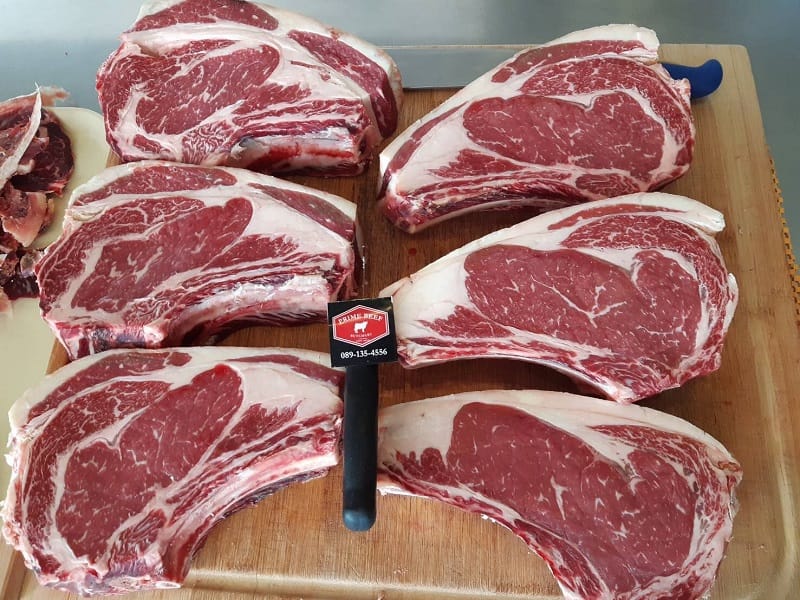
Prime and choice meats are typically higher quality than lower grades and contain numerous health benefits. We’ll explore the health benefits of choosing prime or choice meats so you can make the best decision for your health.
First and foremost, prime and choice meats are higher in protein than their lower-grade counterparts. Protein is essential for various bodily functions, including the growth and repair of cells and providing energy. In addition, it contributes to weight management, muscle development, and more. Furthermore, prime and choice meats tend to be lower in saturated fat, which is linked to an increased risk of cardiovascular disease.
Second, prime and choice meats are typically higher in essential vitamins and minerals than lower-grade meats. These include zinc, iron, Vitamin B-12, and more. Zinc plays an important role in immune health, while the iron is essential for healthy red blood cells. Vitamin B-12 helps the body produce energy and is important for healthy nerve and brain function.
Third, prime and choice meats are a great source of omega-3 fatty acids. Omega-3 fatty acids have numerous health benefits, including reducing inflammation, improving cardiovascular health, and even helping to treat depression and other mental health issues.
Finally, choosing prime and choice meats also helps support sustainable farming practices. By buying higher-quality cuts of meat, you’re supporting farmers who prioritize animal welfare and sustainable farming practices. This means your food is more likely to be free of hormones, antibiotics, and other harmful chemicals.
How Does Aging Affect The Quality Of Prime And Choice Meats?
Aging is the process of allowing the meat to mature, which makes it more tender and flavorful. Aging occurs when enzymes in the animal’s body break down the muscle fibers. This process is known as enzymatic action.
When purchasing Prime and Choice meats, the aging process is paramount. Prime and Choice meats must reach their peak flavor and texture before they are sold. This is why aging is so important.
When purchasing Prime or Choice meats, it is important to check the aging date. Prime meats are aged for 12 to 24 weeks. Choice meats are aged for 8 to 12 weeks. Depending on the type of meat, the aging process can take longer.
The length of the aging period is important because it affects the quality of the meat. For instance, Prime and Choice beef is aged for the longest periods to create the most tender cuts, with Choice beef being slightly more delicate than Prime. On the other hand, pork and chicken should be aged for a shorter time to ensure the meat does not become too tough.
When purchasing aged meats, it is also important to check the color of the meat. Aged meats should have a deep red color as opposed to a lighter, brighter color. This is because the aging process will darken the meat, and the longer it is aged, the darker it will become.
The quality of Prime and Choice meats will also be affected by how it is handled after it is purchased. It is important to store the meat in the refrigerator or a cool, dry place. Make sure to check the expiration date before eating the meat.
How to Cook Prime Steak?
Ingredients:
- 1 (4-pound) prime rib roast
- ¼ cup unsalted butter softened
- One tablespoon of freshly ground black pepper
- One teaspoon of herbes de Provence
- kosher salt to taste
Prime steak is a highly sought-after cut of beef that can be prepared in various ways. It’s a unique cut that comes from the ribeye area and contains a higher fat content than other cuts of beef, giving it a bold, juicy flavor. Prime steak can be an incredibly tender, flavorful, and satisfying meal when cooked properly.
To get started, ensure you have a prime rib roast on hand. Once you’ve got your roast, it’s time to begin the cooking process. Here are the steps to follow:
- Place prime rib roast on a plate and bring to room temperature for 2 to 4 hours.
- Preheat the oven to 500 degrees F (260 degrees C).
- Combine butter, pepper, and herbes de Provence in a bowl; mix until well blended. Spread the butter mixture evenly over the entire roast. Season roast generously with kosher salt.
- Roast the 4-pound roast in the preheated oven for 20 minutes. (If your roast is larger or smaller than 4 pounds, multiply the exact weight times 5 minutes.)
- Turn the oven off and, leaving the roast in the oven with the door closed, let the roast sit in the oven for 2 hours.
- Remove the roast from the oven, slice, and serve.
These are just a few steps to cooking a perfect prime steak. There are a few other tips and tricks you should note when cooking this cut of beef. For example, it’s important to let the steak rest for at least 10 minutes before serving. This will allow the juices to redistribute throughout the meat, providing a tender, juicy steak.
Also, when selecting a prime steak, look for one with good fat marbling. This will ensure you get the most flavor and tenderness from your steak.
How to Cook Choice Steak?
We’ll show you how to cook a choice steak to perfection. Whether you prefer your steak rare or well-done, we’ve got you covered.
Ingredients:
- 2 (12-oz) New York strip or ribeye steaks or 4 (6-oz) filet mignons, about 1½ inches thick
- One heaping teaspoon of kosher salt
- ½ teaspoon freshly ground black pepper
- Two tablespoons of vegetable oil
- One tablespoon of unsalted butter
- A few sprigs of fresh thyme leaves
The first step in cooking a choice steak is to pat it dry with paper towels. This will help remove any excess moisture, and it will also help to make sure that the steak is dry enough for seasoning.
Once the steak is dry, season it all over with salt and pepper. This will help to create a flavorful crust on the steak as it cooks.
Next, please turn on your exhaust fan and heat a heavy pan over medium-high heat until it’s hot. This will help to create a nice searing effect on the steak, and it will also help to lock in the juices.
Once the pan is hot, add a little oil to it and heat it until it begins to shimmer and move fluidly around it. Carefully set the steaks in the pan, releasing them away from you so the oil doesn’t splatter in your direction.
Flip the steaks when they release quickly; the bottom is a deep-brown color, about 3 minutes. On the second side, cook the steaks from rare to medium rare for another 3 to 4 minutes. (For medium, cook for 4 to 5 minutes on the second side; for well-done, cook 5 to 6 minutes on the second side).
Add a pat of butter and a few sprigs of thyme to the pan to add a bit of extra flavor to the steaks. The butter and thyme will melt together and infuse the steaks with flavor.
When the steaks are done cooking, let them rest, covered with aluminum foil, for 5 to 10 minutes. This will help the juices to redistribute throughout the steak. Then, if you plan to slice the steaks, transfer them to a cutting board and slice them thinly against the grain.
What Are Some Common Misconceptions When Choosing Prime And Choice Meats?
At its most basic, prime cuts of meat is the highest quality. They come from the most tender and desired parts of the animal and usually have the most marbling, contributing to the meat’s flavor and juiciness. Prime cuts are generally more expensive than choice cuts but offer the best taste and texture.
Choice cuts of meat, on the other hand, are the next step down from prime. They are still good quality and can be used to make delicious meals, but they are not as tender or flavorful as prime cuts. Choice cuts are usually less expensive than prime cuts, making them an excellent option for those on a budget.
One of the biggest misconceptions about prime and choice cuts of meat is that prime is always the best option. While prime cuts can be delicious and offer the best flavor and texture, they are not always the right choice. If you are looking for a more budget-friendly option, then choice cuts are a great way to get the same quality of meat at a lower price.
Another common misconception is that prime cuts are always more tender and juicy than choice cuts. While prime cuts often have more marbling, this does not necessarily mean they are more tender or juicy. The amount of marbling in a cut of meat is largely determined by the animal’s age, diet, and other factors, so it can vary from cut to cut.
Where To Buy USDA Prime Beef?
The answer is: it depends. If you’re lucky enough to live near a butcher or specialty market that carries USDA Prime, you may be able to find it there. However, these stores can be hard to find, and the selection may be limited.
Another option is to look for online retailers that specialize in high-quality beef. There are a number of reputable companies out there that offer USDA Prime beef delivered straight to your door.
These companies have access to some of the best cuts of meat from trusted ranchers, and they often have a much broader selection than you’d find at a local butcher. Plus, you can conveniently shop from the comfort of your own home.
If you’re looking for USDA Prime beef, finding the best source is worth researching. You’ll want to look for a company that offers a money-back guarantee, so you can be sure you’re getting the highest quality beef. It’s also a good idea to read customer reviews before you place an order.
No matter where you decide to buy your USDA Prime beef, the key is finding a trustworthy source. Quality beef can make all the difference in the flavor and texture of your dishes – and with the right source, you can get the very best.
FAQs About Prime vs Choice Beef
Is Prime Meat Always From A Higher Grade Animal Than Choice?
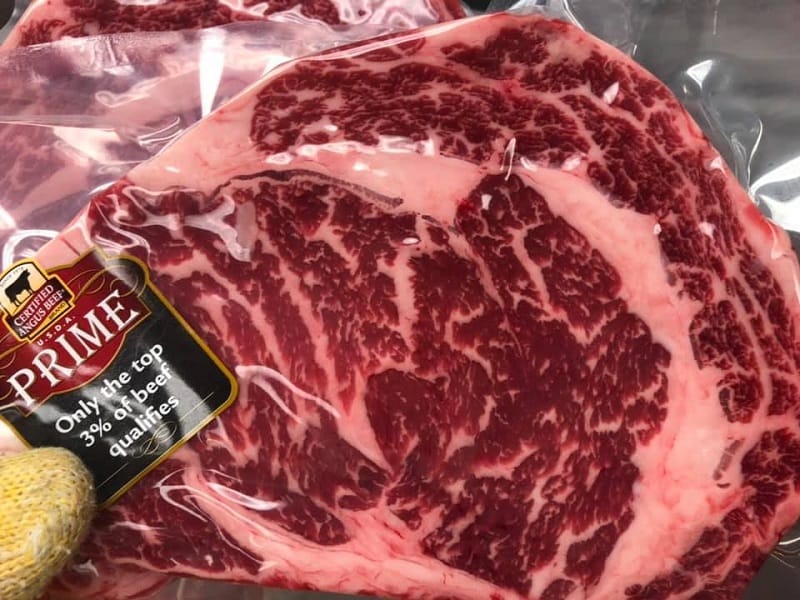
When it comes to beef, different grading systems determine the quality of the meat. The top three grades of beef are Prime, Choice, and Select. Prime beef is considered the highest quality with the most marbling and tenderness, while Select is the leanest grade. Many people assume that Prime meat always comes from a higher-grade animal than Choice, but that’s not necessarily true. The quality of the meat is determined by the amount of marbling in the muscle, not the age or breed of the animal.
USDA Choice beef is very high quality and is only slightly less marbled than Prime, making it an excellent choice for those who want a tender and juicy steak without paying the premium price for Prime. Ultimately, the best way to choose beef is to look for marbling in the muscle and consider the cooking method used to prepare it. Whether it’s Prime or Choice, with the right preparation, it can be a delicious and satisfying meal.
If Given A Choice Between Prime And Choice Beef, Which Would Top Chefs And Food Critics Choose And Why?
If given a choice between Prime and Choice beef, top chefs and food critics would choose Prime beef due to its higher marbling content, which translates to more tenderness and juiciness in the meat. However, they note that branded high Choice beef is still an excellent option for consumers with less marbling but still a high-quality product.
Prime beef represents only 3% of beef graded in America and is considered the best of the best, while Choice accounts for half of all graded beef and is more commonly found in local grocery stores. Additionally, Prime beef is more expensive than Choice, making it a less affordable option for many home cooks or smaller restaurants. Ultimately, the choice depends on the individual’s taste preferences, budget, and availability.
Conclusion
In conclusion, when it comes to prime vs choice, there’s no one-size-fits-all answer. Ultimately, it depends on the context, budget, and personal preferences. Prime meat is typical of higher quality, but it also comes at a higher cost. Choice meat is a more economical option, but it may not be as flavorful or tender. By weighing the pros and cons of each, you can make an informed decision on which option is best for you. No matter what you choose, prime vs choice will always be an important factor when shopping for meat.
References:
- https://www.usda.gov/media/blog/2013/01/28/whats-your-beef-prime-choice-or-select
- https://www.mayoclinic.org/healthy-lifestyle/nutrition-and-healthy-eating/in-depth/cuts-of-beef/art-20043833

Hey readers! Chip Holland here, and I’m a Manager of this website. My passion for writing about it only matches my passion for BBQ. Follow my blog for mouth-watering recipes, tips, and tricks for the perfect smoke, grill, and BBQ. I’m sure you won’t be disappointed!
